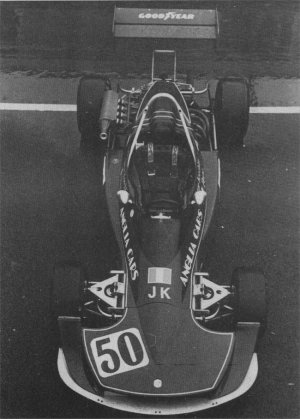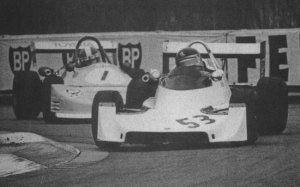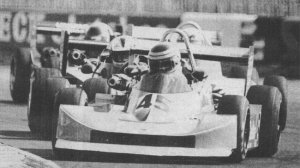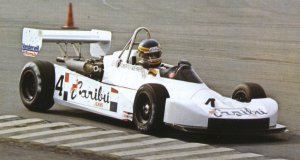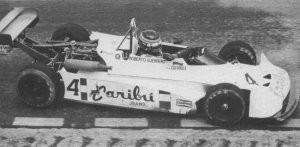|
|
| |
|
|
|
| |
|
 |
|
|
|
Roberto
Guerrero in the JM6 at Thruxton in 1980
|
|
| |
|
Three manufacturers
of the Classic F3 era, Argo, GRD and Modus, had two important things in
common; firstly they were all based in Norfolk and secondly they all has
Swiss Jo Marquart as their designer. Arguably they had a third thing in
common, they were nearly very successful but for one reason or another they
never quite fulfilled their potential.
After Modus had failed Marquart began work on the first Argo in a domestic
garage and he was joined by John Peterson an American cofounder of the British
Novamotor agency and former mechanic Nick Jordan. The first JM1 chassis
was completed in February 1977 and showed a lot of promise. Until the advent
of the full ground effects F3 car Argos, especially the JM6, would still
be a competitive proposition. However by 1981 when the Ralt RT3 was dominating
racing Argo's two attempts to emulate the Ralt, the JM8 and the JM10, would
prove to be disasters and Argo moved away from F3. |
| |
|
 |
 |
|
|
|
Overhead
view of the JM1 showing the full width nose and the body
flaring out towards the rear.
|
|
Unsurprisingly
the JM1 was very similar to the last of the F3 Modus line although
the bodywork was reduced giving a lower, smoother shape. Front suspension
was by double wishbones with outboard coil springs and dampers, top
link/bottom wishbone set up was fitted at the rear. Most noticeable
feature was the full width nose with a deep cockpit surround reminiscent
of the Ralt RT1. Stefan Johansson gave the marque its first victory
at Anderstorp in August and David Kennedy would have a brace of 2nds
in the European Championship. |
|
| |
|
 |
 |
|
|
|
Stefan
Johansson on his way to 2nd place in
the World Cup International at Donington,
winner Derek Warwick follows.
|
|
Up
until a week before the beginning of the season there was no deal
for the works team so when David Kennedy came up with some money the
previous years JM1 was wheeled out with no modifications or testing.
Not surprisingly results were poor and Kennedy withdrew part way through
the year. Stefan Johansson continued with his previous years example
and managed some good results. |
| |
|
| |
|
 |
 |
|
|
|
Roberto
Guerrero at Silverstone in his JM3
|
|
A
new car was needed for 1979 and the JM3 was the answer, it consisted
of a slim monocoque with wide sidepods and one-piece bodywork. Racing
Team Holland ran a pair without success so Roberto Guerrero became
the focus of development. Towards the end of the season a revised
car with stiffer suspension, monocoque and harder dampers was tried
with some signs of improvement. |
|
| |
|
 |
 |
|
|
|
Roberto
Guerrero at Silverstone in a JM6.
|
|
 |
|
|
|
Roberto
Guerrero appliies some opposite lock to
his JM6 at Oulton Park..
|
|
| |
|
The
JM6 was a successful development of the previous year's JM3. For this
year cars were only raced in the UK and by the summer they were very
much the car to beat. By year end Guerrero had won five races and
finished second in the Championship whilst Tassin had two victories
and finished fourth in the series. Front suspension was by wishbones
with outboard coil springs and dampers. Rear suspension was by a top
link with a lower wishbone with a toe-in link, a single radius rod
was fitted. Rear brakes were inboard whilst coil springs and dampers
were outboard. |
|
| |
|
| |
|
| Drivers: |
|
| 1977 |
Christian
Debais, Ulf Granberg, Stefan Johansson, David Kennedy, Jorge Koechlin,
Danny Sullivan. |
| 1978 |
Janito
Campos, Norbert Hütter, Stefan Johansson, David Kennedy, Leon
Walger. |
| 1979 |
Bruno
Eichman, Roberto Guerrero, Rob Leeuwenberg, Arie Luyendijk. |
| 1980 |
Roberto
Guerrero, David Sears, Thierry Tassin. |
|








